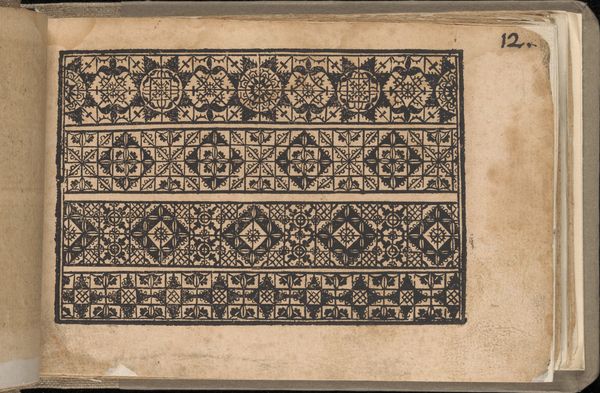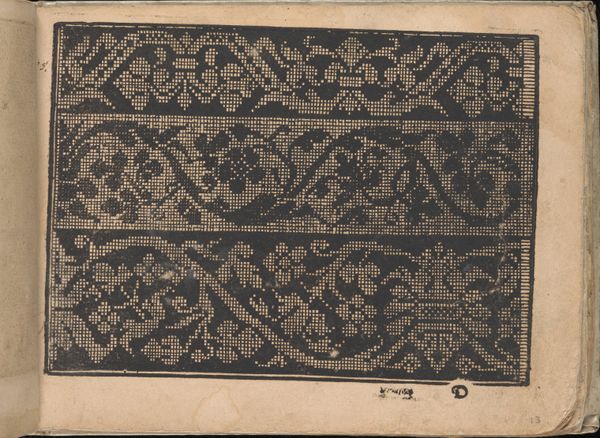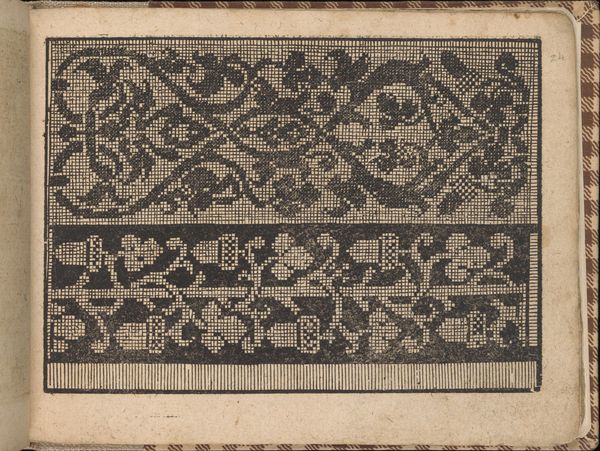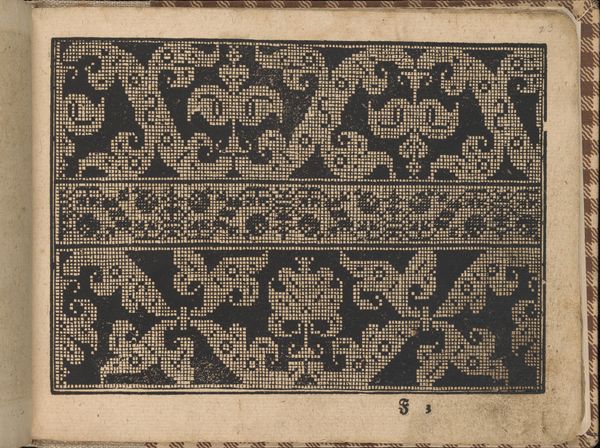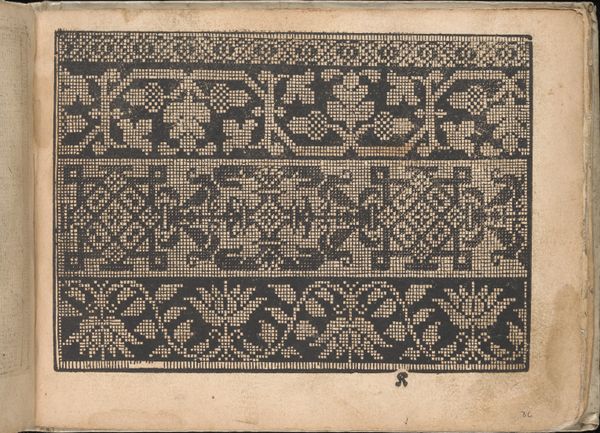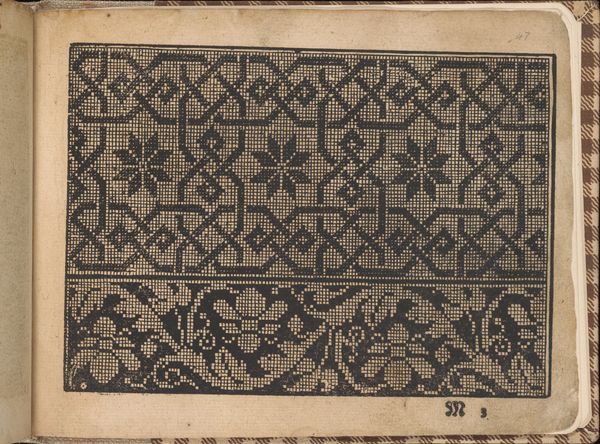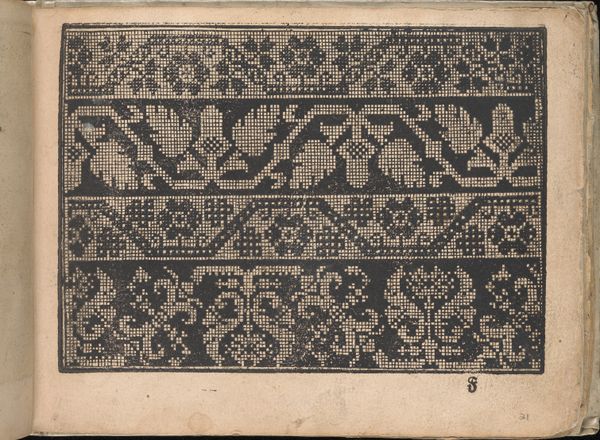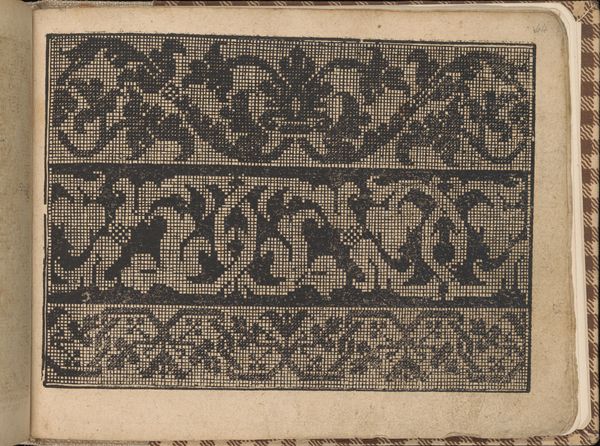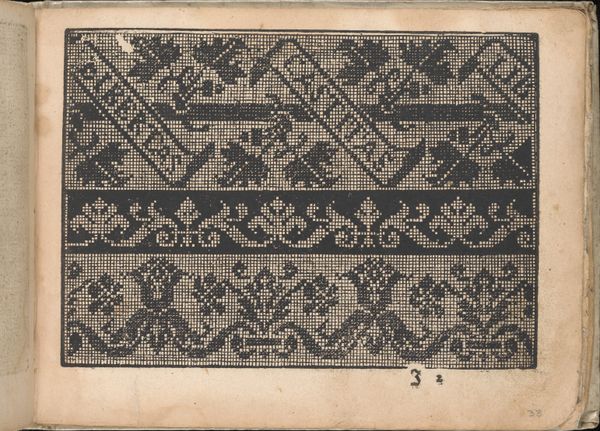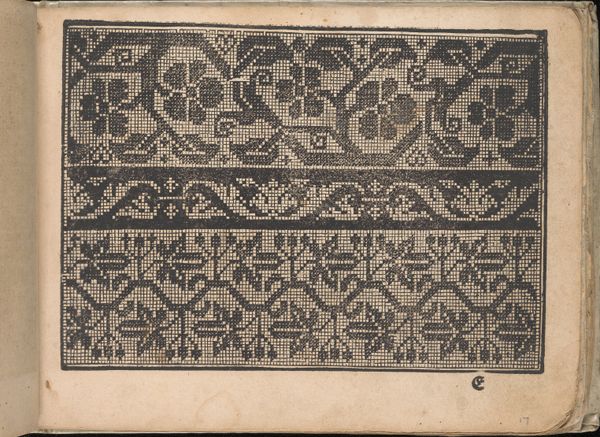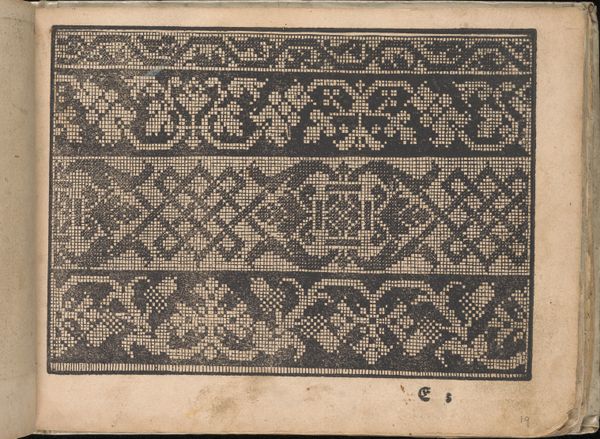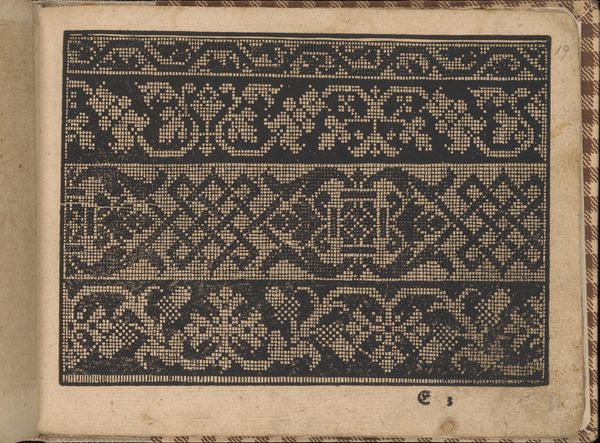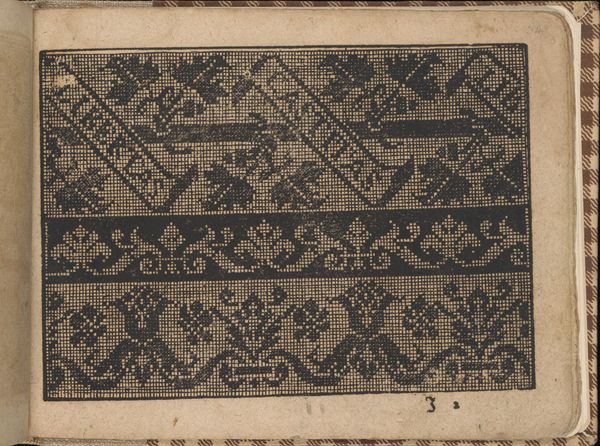
drawing, print, textile, paper, woodcut
#
drawing
# print
#
book
#
pattern
#
bird
#
textile
#
paper
#
11_renaissance
#
geometric
#
woodcut
Dimensions: Overall: 6 1/8 x 7 7/8 in. (15.5 x 20 cm)
Copyright: Public Domain
Curator: What strikes me first is the regimented nature of the image, almost like a code waiting to be deciphered. Editor: Precisely! This is page 14r from Bernhard Jobin's *Neu Künstlich Modelbuch*, or New Artful Pattern Book, dating to 1598. It’s a woodcut print on paper, currently housed at the Metropolitan Museum of Art. These books served as guides for textile workers and embroiderers during the Renaissance. Curator: Ah, so each of those horizontal registers would be patterns translated into stitched reality? Do the different bands carry different significance? Some floral, some geometric, others almost bestial? Editor: Absolutely, and they’re loaded with social implications! The motifs offered choice to those crafting the garments or linens, marking one’s personal status. Birds, for example, could denote freedom and grace, resonating with ideals of the period. Curator: It feels profoundly egalitarian, even revolutionary in a way. The idea of accessible artistry allowing for the democratization of decoration. A subversion of class hierarchy perhaps, through stitches? Editor: That's it exactly! Remember, at the time, sumptuary laws attempted to restrict who could wear what based on social standing. Pattern books like these arguably enabled a form of quiet resistance, even a degree of self-expression within those confines. The use of recurring motifs connects to something deeper, though. It establishes an important dialogue with visual patterns spanning centuries. We still see their echoes in textiles today. Curator: These symbols served not just decoration, but as signifiers embedded within the Renaissance social fabric. It reflects a powerful need to categorize and represent the natural world, a very Renaissance impulse that connects with what those living through a tumultuous period chose to signify in daily life. Editor: Looking at the book in this way highlights a through line between the personal and the political, how the threads of our lives, literally in this case, connect us to broader socio-historical forces. Curator: Indeed. Thinking about cultural memory, what seems "old" takes on exciting modern relevance. Thank you. Editor: The pleasure was all mine. It always returns us to understanding history, the art that emerges can always have so much to show us about our present circumstances.
Comments
No comments
Be the first to comment and join the conversation on the ultimate creative platform.
